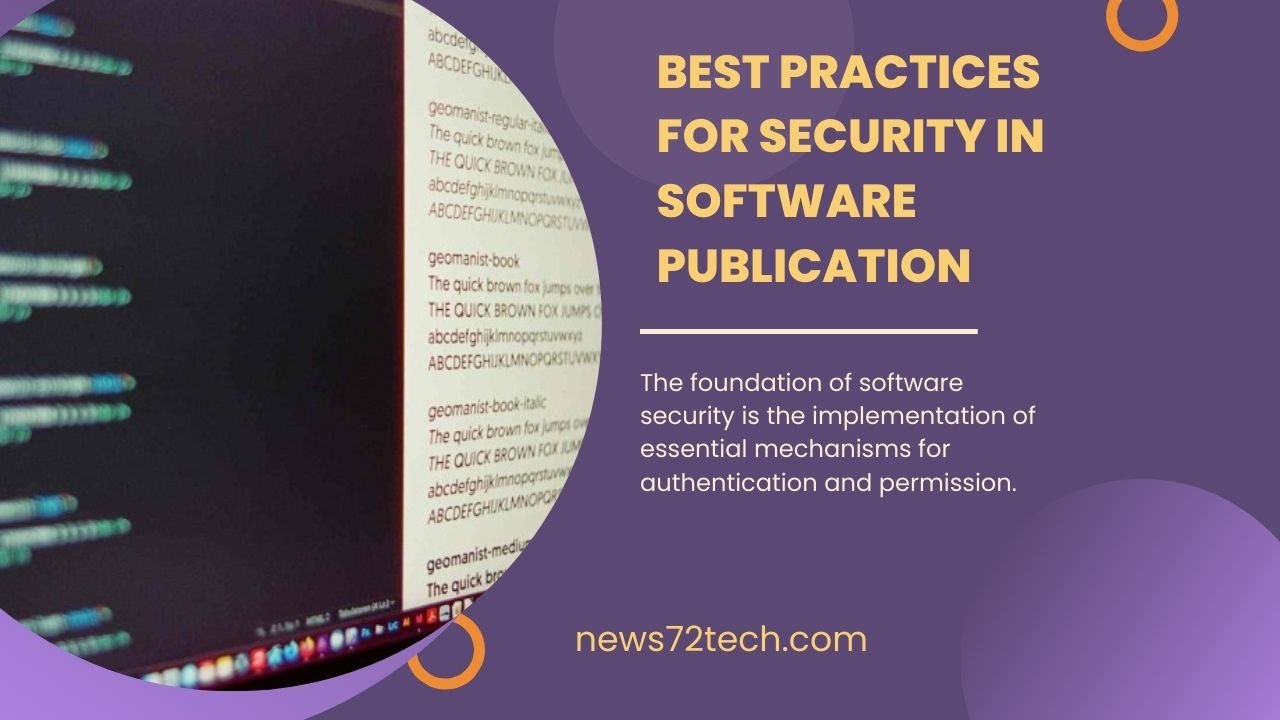The discipline of software development is rapidly evolving in the context of the digital revolution. When businesses strive to create innovative solutions to meet market expectations, security considerations typically suffer as a result. Best Practices for Security in Software Publication However, ignoring security can have disastrous consequences, such as lost money, damage to one’s reputation, and data breaches.
This article looks at security best practices that software development companies for digital publishing should follow to ensure the stability of their products.
The Best Ways to Publicize Software Solutions
1. Static Analysis and Code Review:
The foundation of safe software is sound code. Regular code reviews and static analysis techniques can help identify vulnerabilities and potential exploits early in the development process.
Best Practices for Security in Software Publication Before releasing software into production, developers should establish a collaborative culture and carry out thorough code reviews to find security flaws. Automated static analysis approaches can verify that coding standards are being followed and search codebases for common vulnerabilities in addition to manual reviews.
2. Dependency Examining:
In contemporary programming, third-party libraries and frameworks are often utilized. However, vulnerabilities in these dependencies might be quite risky. Frequent scanning and updating dependencies to the most recent secure versions might help to mitigate potential security threats. By employing automated solutions to proactively address outdated or vulnerable dependencies, developers can reduce possible risks.
3. Secure Development Lifecycle (SDLC):
Using a secure development lifecycle is essential when creating safe software from the ground up. In order to do this, security protocols need to be include into the phases of requirement collecting, design, coding, testing, and deployment in the development process.
By incorporating security checks at every stage of the development process, organizations may improve the security posture of their software solutions and lower the likelihood that vulnerabilities will be introduced.
4. Regular Security Training for Developers:
Security is an ongoing endeavor that should not be take into consideration just once. It’s critical to continually teach developers on the newest security issues, best practices, and emerging technologies. This ensures that the development team will be alert and adaptable to the ever-changing threat scenario. By taking part in security awareness training, developers can increase their ability to make decisions that enhance code security.
5. Controls for Authentication and Authorization:
The foundation of software security is the implementation of essential mechanisms for authentication and permission. Multi-factor authentication, rigorous password limitations, and secure session management are essential components of a safe authentication system.
Best Practices for Security in Software Publication Precisely calibrated permission constraints also ensure that users only have access to the resources they need, reducing the likelihood of unauthorized access.
6. Data Encryption:
Encrypting sensitive data is essential. Encrypting data while it is being processed, in transit, and at rest increases security. For safe data transmission, encrypt the data using protocols like HTTPS. It is imperative to adopt robust encryption algorithms and critical management procedures in order to prevent unauthorised access to data that has been save.
Regular Security Audits and Penetration Tests
Regular security audits and penetration tests are necessary to identify and address vulnerabilities in software solutions. Whereas penetration testing imitates real attacks to assess the system’s resilience, security audits look at the system itself. Regular testing assists in identifying and resolving vulnerabilities and raises the awareness of security risks among the development and operations teams.
8. Developing an Incident Response Plan:
Security issues can arise in any system. A clear incident response strategy is necessary to lessen the harm that a security breach can do. This plan should specify what needs to be done in the event of a security incident, including communication strategies, containment measures, and post-event analysis to prevent such issues in the future.
9. Patch Management for Security:
Software providers are always looking for ways to improve their products, and they provide patches to address these issues. It’s critical to apply security fixes on time in order to prevent malicious actors from taking advantage of weaknesses.
A strong patch management process makes sure that software solutions are up to date with the most recent security fixes. Which reduces the likelihood that known vulnerabilities will be exploit.
10. Handle Configurations Securely:
Preventing security breaches requires securely setting software solutions, a necessity that is occasionally overlook. Default configurations may result in unnecessary security holes.
Because of this, following security best practices is essential when configuring servers, databases, and other software infrastructure components. Automated solutions can make it simpler to enforce secure installations and identify deviations from best practices. For digital publishing software, there are a number of best practices that can maximize the impact and financial gain of your product. The following guidelines should be strictly adhere to:
Concluding
Software security cannot be introduce after the fact; it must be taken into account from the outset of development and release. Developers and organizations can create reliable software solutions that meet functional needs and resist the ever-changing threat of cyberattacks by putting these security best practices into effect.
In an increasingly digital and networked world, developing and distributing software solutions that customers can trust means giving security top priority from the beginning of development. Staying on top of changing threats, and fostering a security-conscious culture.




